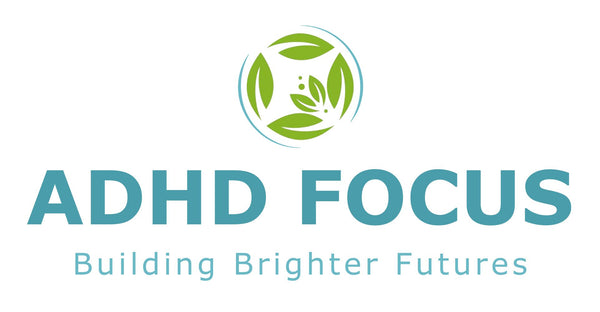
Preschool Teachers’ Guide to ADHD and Sensory Processing Issues
Share
Preschool can be a joyful but challenging stage, especially when children show signs of ADHD (Attention-Deficit/Hyperactivity Disorder) or sensory processing issues. These children may struggle with sitting still, listening to instructions, or coping with noise, textures, and transitions.
In this guide, we’ll discuss what ADHD and sensory processing issues look like in preschoolers, how the two overlap, and most importantly, give preschool teachers practical strategies to create a calm, inclusive classroom. We’ll also share natural support options that can make a real difference in children’s daily experiences.

What is ADHD in Preschool Children?
ADHD is one of the most common neurodevelopmental conditions in children, and signs often appear in the preschool years. A child with ADHD may:
- Struggle to sit still during storytime
- Interrupt or blurt out answers
- Lose focus quickly, especially on longer tasks
- Act without thinking about consequences
- Have difficulty following multi-step instructions
It’s important for teachers to know that these behaviours are not due to laziness, naughtiness or poor parenting. With the right support, children with ADHD can flourish academically and socially
Understanding Sensory Processing Issues
Sensory processing issues occur when a child has trouble managing input from their senses, i.e sound, touch, movement, light, or smell. This can show up in two main ways:
- Sensory seeking: Children may constantly move, bump into things, touch everything, or crave loud sounds.
- Sensory avoiding: Children may cover their ears, avoid messy play, dislike bright lights, or get upset with certain fabrics or textures.
These reactions are not “bad behaviour.” They reflect how the child’s nervous system processes information differently. In a busy preschool setting, this can make daily routines overwhelming unless teachers put the right strategies in place.
How ADHD and Sensory Issues Overlap in Preschoolers
It’s common for ADHD and sensory processing difficulties to occur together. Both can lead to:
- Struggles with transitions (e.g., moving from playtime to circle time)
- Overwhelm in noisy or busy environments
- Difficulty with group play and following instructions
- Emotional outbursts when overstimulated or frustrated
Recognising these challenges early helps teachers respond with empathy and practical tools, rather than labelling the child as disruptive.
Practical Classroom Strategies for Teachers
1. Structure and Routine
Preschoolers with ADHD or sensory challenges thrive on predictability.
- Use a visual timetable with pictures to show daily activities.
- Prepare children for transitions with simple countdowns (“Five more minutes of playtime, then we clean up”).
2. Create a Sensory-Friendly Classroom
- Offer a quiet corner or calming space with soft lighting and cushions.
- Provide safe fidget tools (stress balls, textured toys) to help with focus.
- Include flexible seating options like wobble cushions, beanbags, or floor mats.
3. Break Tasks into Small Steps
Instead of giving three instructions at once, break tasks down.
- “Please take your book.” (pause)
- “Now sit on the carpet.” (pause)
- “Open to page one.”
This prevents overwhelm and builds confidence.
4. Encourage Movement
- Short, structured movement breaks (stretching, clapping games, a quick dance) can help release energy and refocus attention.
- Incorporate movement into learning, like counting while hopping or singing while clapping.
5. Positive Communication
- Use calm, gentle redirection rather than punishment.
- Celebrate small successes with praise and encouragement.
- Foster inclusion by guiding peers on kindness and understanding.
Natural Support Options for ADHD and Sensory Processing
Along with classroom strategies, natural remedies can provide gentle support:
- Focus & Calm - Helps children with concentration, emotional regulation, and restlessness.
- BrightSpark - Supports children who struggle with hyperactivity and impulsivity.
-
MindSoothe Jr - Aids emotional balance, helping children manage frustration, anxiety, or sensory overwhelm.
These remedies are safe, natural options that can complement the strategies teachers use in the classroom, while also giving parents peace of mind.
Frequently Asked Questions(FAQs)
Q: How do I know if a child has ADHD or is just energetic?
A: All preschoolers are energetic, but ADHD behaviours are consistent, occur across different settings, and significantly impact learning and social interactions.
Q: Should I discuss my concerns with parents?
A: Yes, with sensitivity. Share observations (e.g., “I’ve noticed Qhama finds it difficult to transition from playtime”) instead of labels. Encourage professional evaluation when necessary.
Q: Do children outgrow sensory issues?
A: Some sensory sensitivities improve with age, but early support helps children cope better and reduces stress in the classroom.
Final Thoughts
Supporting preschoolers with ADHD and sensory processing issues requires patience, structure, and creativity. With the right strategies, teachers can create an inclusive environment where all children feel safe, capable, and understood. By combining classroom adjustments with gentle natural remedies, teachers and parents can work together to help every child thrive, both inside and outside the classroom.
Related Products
Related Products
- Understand ADHD Meltdowns: How Teachers Can Prevent and Respond with Confidence
- Classroom Hacks to Help Teachers Keep ADHD Students Motivated
- What Works (and What Doesn’t) with ADHD Kids: A Teacher’s Reality Check
If you have any question, please contact us or leave a comment below for FREE health advice. We always love hearing from you!
